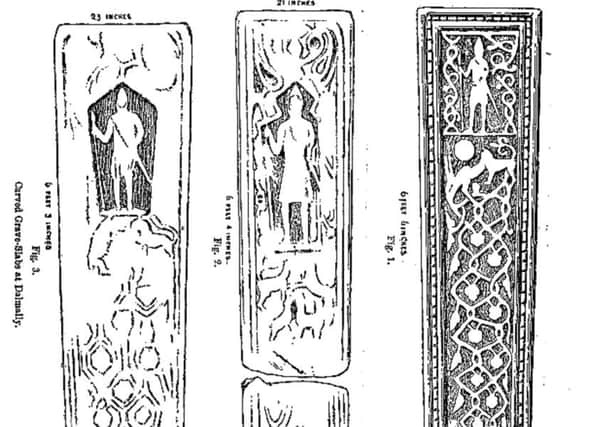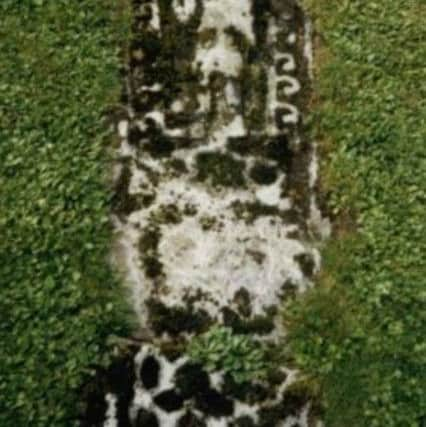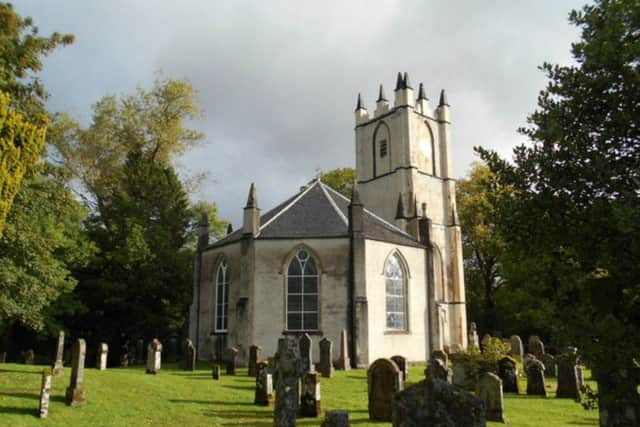600-year-old burial stones of Clan MacGregor chiefs 'to be saved'


Now the incredible remnants of the old clan system are a step closer to being saved following a breakthrough in a 20-year-campaign to preserve them for the future.
The Clan Gregor Society has been lobbying since the late 1990s to move the stones from the churchyard at Glenorchy Parish Church at Dalmally, near Loch Awe, where they remain exposed and at risk from further damage.


Advertisement
Hide AdAdvertisement
Hide AdOriginally placed around the high altar of the original church to mark the burial spots of clan chiefs, the stones, possibly 12 in total, are likely to have been moved outdoors during the Reformation.
Seven of the slabs, which are considered fine examples of the Loch Awe School of carving, have remained there ever since.
They include the grave slab of John Macgregor of Glenurquay who was buried on the north side of the High Altar of the original church in 1390.


Now, a meeting is due to be held on-site with Historic Environment Scotland to push the project forward after the society won the backing of the church to move the stones for safekeeping.
Advertisement
Hide AdAdvertisement
Hide AdRichard McGregor, chair of the Clan Gregor Society who leads the Dalmally Stones Project with his associate Keith McGregor in Connecticut, said it was now hoped the stones could finally be protected for the future and put on public display in the church.
Mr McGregor said: “We are excited to think we might be able to move forward with this but we aware that there are still hurdles to get over.
“We have had to go through a lot of options to get to where we are and we have been working with a lot of people in the glen to discuss the best way forward.


“There have been a five ministers at the church in Dalmally since we began work on this but the church is now at the stage where it wants to help us.”
Advertisement
Hide AdAdvertisement
Hide AdMr McGregor said it could cost up to £250,000 to removed and display of the stones with fundraising ongoing at the Clan Gregor Society.
He said there was a “strong pull” to Scotland among its members, not least because the name MacGregor name was banned by the state in the 1600s when James VI sought to dismantle the clan after a particularly bloody bout of violence.
He added: “There are a lot of people across the world who have a big pull to the homeland. Particularly because the name MacGregor was banned over 170 years, people feel very strongly attached to Scotland and to the clan.”


Records show three of the stones, which measure up to 6ft 6ins in length and around 2ft wide, were carved with a warrior figure, armed with a sword and spear, and wearing a pointed helmet and short tunic. Each is decorated with a floral pattern.
Advertisement
Hide AdAdvertisement
Hide AdRecords show that the original church on the site, called Dysart Church, was the burying place of the chiefs of Clan MacGregor between 1390 and 1528.
The stone of John Dhu Macgregor of Glenstray, who was buried on May 26 1519 - on which day a great meteor was seen in Glenurquay, according to accounts - is also thought to be lying in the churchyard.
It was rebuilt in 1811 with the bones of several prominent clan members believed to rest under the entrance way of the current building, which is Grade A listed.
The Dalmally Stones Project began in 1996 with a view to preserve the memorials to the ancient clan chiefs.
Advertisement
Hide AdAdvertisement
Hide AdIt evolved into a wide ranging body of work which included a professional archaeological dig at a hilltop site called Tigh Mor - or Big House - which overlooks Kilchurn Castle on Loch Awe.
There, remnants of a settlement were found, as well as a bloomery for producing iron.
It dates from around 1275 to 1285 which coincides with the period the MacGregors settled in the area.
